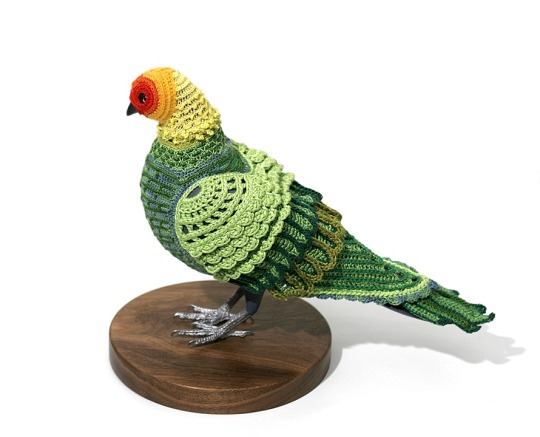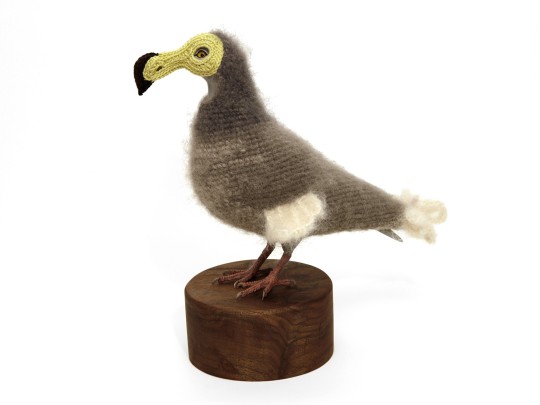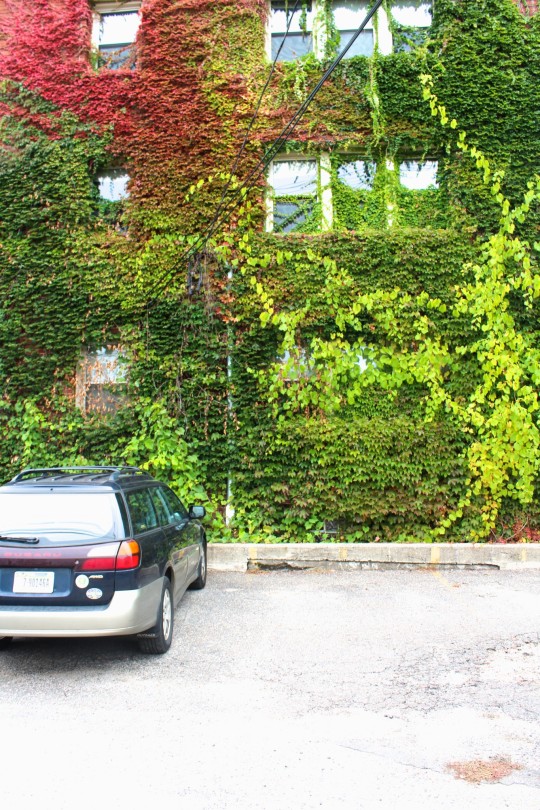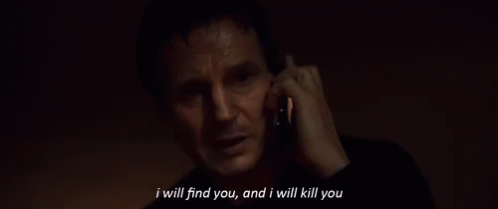#urban reclamation
Text

found in a squat in an abandoned housing development, 2023
#urban decay#collage#squatting#crust punk#diy punk#diy#collage mural#wallpaper#squatters#abandoned buildings#urban reclamation#deer#antlers#this shit was cool#i would go back tbh but it was too much of a hot spot#pigs all over and lots of ppl claiming territory
8K notes
·
View notes
Text

2018
#photography#minneapolis#mpls#mplsart#plants#outdoors#reclamation#nature#vines#autumn#red#orange#yellow#overgrowth#urban reclamation
2 notes
·
View notes
Text
My favorite form of therapy is watching nature reclaim and erase things the humans created
37 notes
·
View notes
Link
“Across America, cities are choosing to upcycle their felled urban trees into valuable products rather than chipping them, burning them, or dumping them into the landfill.
Along with being more generally favorable to the environment, it’s a trend that’s leading to entrepreneurial innovation, as a network of urban woodworkers has coalesced around municipalities looking to do something more productive with waste lumber.
When processed, sold, and utilized to its highest value, the U.S. could produce nearly 8 billion board-feet of urban-sourced lumber annually, or around 10% of the production that the traditional lumber industry gathers from America’s forests.
An article from Pew Charitable Trusts reports that in 2018, city leaders in Harrisonburg, Virginia, began a wood utilization effort that saw felled municipal trees go into making park benches, planter boxes, and conference room desks.
The article continues in Maryland, where the Baltimore Wood Project, a U.S. Forest Service-led effort to promote urban wood reclamation, has provided more than 65,000 board-feet for city constructions of fishing piers, pedestrian bridges, and wellness centers.
Out west, West Coast Arborists are serving this cause in 350 cities across California and Arizona, lobbying for city ordinances on shade trees and other urban tree planting programs to adopt the planting of tree species with a high end-use value for the purpose of upcycling and reclamation...
Urban Hardwoods, a Seattle-based bespoke furniture maker, runs its own sawmill for the processing of trees received through Urban Wood Network, an industry collaborator that connects municipalities, sawmills, arborists, finished goods producers, and others in a giant web of urban wood reclamation activity.
All of Urban Hardwoods’ beautiful furniture is made from trees cut down as part of the tree-surgeon work in Seattle within a 15-mile radius of the store.
Nearby, Oregon also has a program from its environmental department for the recycling of shrubs, limbs, and other wood that can’t be turned into high-end products. It instead turns them into biochar, a recently developed soil amendment that involves heating wood over fire without access to oxygen.
When placed in soil, biochar acts like a sponge to soak up minerals and water, as well as acting as something nice, nutritious and solid for a tree or shrub to wrap its roots around.
It’s not as carbon-neutral as furniture, but making biochar and other fertilizers produces less CO2 than shredding trees into chips, burning them, or loading up a landfill.” -via Good News Network, 1/16/23
#urban ecology#trees#upcycling#woodworking#woodworker#handmade furniture#circular economy#arborist#wood reclamation#sustainability#good news#hope
34 notes
·
View notes
Text

A bit unsettling- Seattle, WA
0 notes
Link
#history#urban history#urban history association#butte#butte montana#copper#copper mining#parks#recreation#reclamation#superfund#berkeley pit#epa
0 notes
Text
The Ones Who Found The City
Ursula K. LeGuin's "The Ones Who Walk Away from Omelas" is a classic short story, and obviously I knew of it, but I'd never actually read it until recently. Well, I finally got around to it, and as many timeless classics do, it got stuck in my brain. This story is my - response? homage? sequel? pale imitation? - to it. I suggest you go and read "The Ones Who Walk Away from Omelas" if you haven't. Not because it's actually required reading for this story - I think it stands on its own more or less okay - but because it is a classic for a reason.
---
Initially, no one is quite certain of what they’ve found when the Animus breaches the next manifold layer. This is in and of itself expected, of course. Exploring psychspace is by its very nature an unpredictable venture. Each of the various infinite layers is unique and bizarre in its own way, reflecting the archetypal underpinnings of an entire species present, past, or future across an infinitude of possible realities. The crew of the Animus, therefore, has seen things so utterly alien and inexplicable that only the rigors of their training and the care put into their psychic warding saved them from insanity.
It is somewhat disappointing, then, to find that this sub-domain is just a city. Definitely not Terranic, certainly not, but still following the Terranic modality, with no more than a seven-degree quantum drift.
“Towers,” Thromby says into the recorder as they sit at their post at the nose of the Animus’s command center. “Following the standard skyscrape pattern. Unclear if they’re domiciles or business centers or both. Coastal city, bay appears to be oceanic rather than lake. Pleasing blend of urbanization with natural setting.” They glance at Vigil. “Anything on the lifescope?”
Vigil shakes his head. “Nothing. It’s empty. Totally empty.”
“That’s odd,” Katrina speaks up from the helm. “The city doesn’t show signs of decay or reclamation by nature.”
“Entropy may not work in the usual way in this sub-domain,” Teasha reminds her. “The city itself could be the natural growth, reclaiming the artificial countryside. We’ve seen things like that before.”
Thromby feels Katrina’s unconscious bristling at the subtle reminder that she is the newest member of the crew and thus less experienced in the vagaries of psychspace than everyone else. Next to Vigil, who is only nineteen, she is also the youngest. “I would expect,” Katrina says, her voice cool, “that in a sub-domain so obviously based on human archetypes, entropy and nature-versus-civilization tropes would function more or less as usual.”
“I’m certain you would,” Teasha replies, her voice equally cool. “When you’ve been at this as long as me and Thromby, you’ll learn better.”
“Enough of that,” Thromby says before Katrina can reply. They love Teasha, but she tends to be too harsh on new crewmembers. A defense mechanism, they know, to insulate her from the all-too-common pain of losing them. But Katrina has too much to prove. The clash is natural and to be expected, and even useful at times, but now is not one of them. “Vigil, get me readings on atmosphere, microbiome, and psychic radiation, if any. Katrina, pick a spot on the coast and bring us down there. I want to see if the ocean is actually an ocean or a liminality representation. Teasha, get the Animus tuning to this sub-domain’s resonance frequency. I don’t want any dissociation issues.”
The orders are mostly unnecessary, since everyone already knows what they’re about, but they serve their intended purpose, which is to re-focus everyone on the task at hand and redirect their nervous energies, particularly Katrina’s. Thromby still isn’t sure she’s going to make the cut after this expedition is over, but there’s potential there. They would be foolish to ignore someone with Katrina’s strength of identity grounding.
There are plenty of sub-domains out there where it’s useful to be entirely certain of who you are, and not everyone can be.
---
The first day’s worth of exploration yields more questions than answers, which is normal and expected. Thromby is indeed certain that Katrina’s initial assumption that this is a human-archetypal sub-domain is correct. Human atmosphere, human shadow- and ontological concepts, Terranic fish in the very-real ocean. But the iconography is sparse and mostly nonsensical. It’s clear that the city was able to actually function as a city, but it feels purposeful, designed, in a way that actual cities outside psychspace rarely do.
“It’s a metaphor,” Vigil says as they sit around a campfire on the beach after the first day.
“Well, obviously,” Katrina agrees, and Vigil lights up – both visibly and psychically – at her concordance. Thromby knows Vigil has been nursing burgeoning feelings for Katrina since she joined them, and has so far seen no need to make anything of it. “But a metaphor for what?”
“We don’t have enough data,” Vigil replies. “But I’m certain of it. We just need to keep exploring.”
Thromby takes a bite of the fish they’ve been roasting over the fire. It’s a pleasant change of pace to be able to eat something real, instead of the platonic nourishment suggestions dispensed by the Animus. “Agreed. I’m curious to see what the point of this place was. We have five more days before we have to resurface and the expedition has been quite successful already. I think we can spare the time. Teasha?”
Taking a bite of her own fish, Teasha purses her lips as she chews. “I concur, but I’m uneasy.”
Teasha is their psychometry specialist, so this makes all of them sit up a little straighter. “Are we in danger?” Katrina asks.
“Of course we’re in danger, we’re in psychspace. But in this particular sub-domain? Metaphorical danger, as Vigil says. Ideological or memetic patterning rather than physical.”
Thromby nods. “I suspected that might be the axis of it, here. We will need to split up to cover the necessary ground in the time we have left, so everyone stays in contact while exploring. Mechanical and psychic. No exceptions.”
None of them are particularly happy with this pronouncement, but they see the wisdom of it. It’s distracting and somewhat draining to keep a four-way psychic connection going, especially over distance, but their implanted transceivers sometimes don’t function properly, depending on the sub-domain. Electromagnetism and causality both seem to be standard here, but such things have been known to change in an instant depending on whether the sub-domain is actively malicious or not.
Thromby doesn’t feel any such malice here, though. That doesn’t mean it isn’t present; such things are often quite good at hiding themselves. But they’ve been exploring psychspace for seventy-eight years subjective. They’ve learned to trust their instincts.
---
Two more days of exploration are frustratingly unrevealing. The city is the size of a proper metropolis, and they know it will be impossible to actually explore any significant percentage of it in only a few days, but Thromby is still irritated by their lack of progress. They find evidence of cultural signifiers, rituals, and traditions, but again, the iconography is vague and appears opaque to standard Jungian-Jingweian analysis.
Teasha spends the two days on a different investigative track than the rest of them. “Psychometrically speaking the city is remarkably healthy,” she said on the morning of their second day. “Most locations, metaphorical or otherwise, bear the echoes of trauma or strife, but this place seems to have been almost entirely peaceful. Totally voluntary anarcho-communism or ordnung-socialism, perhaps, without the usual markers of systemic violence inherent to capitalistic or fascistic systems. But there’s a thread somewhere that I keep detecting the edges of.”
“A thread of what?” Thromby asked.
“Pain, of course.”
It is on the evening of their third day in the city that Teasha calls them to her. She uses their transceiver link rather than a psychic summons. “To avoid contamination,” she explains. “I’ve found the source of the thread. Double your usual wardings and enter seclusive patterning before you come inside.”
Thromby does so, of course, though they dislike cutting themselves off from their extrasensory perception. It feels like trying to see with only one eye. When they arrive at Teasha’s location, however, they immediately understand why she insisted on it. The possibility of psychic contamination here is very high.
“What is this?” Katrina asks, holding her nose in disgust.
“The point of the metaphor, of course,” Teasha replies. She indicates the filthy cellar in which they’ve found themselves, the only part of the city so far that has seemed actively decrepit. “I guarantee you that even if we spent the rest of our lives exploring this city we would find only this one place showing any signs of entropy.”
The cellar stinks of excrement, a combination of ammonia and fetid shit, despite the physical processes creating such smells having terminated long ago. The floor is dirt. There are no windows. In one corner there are two mops, their heads stiff with drying waste, and a bucket, the metal bands around its circumference orange with rust.
“They concentrated all of the city’s entropy into a single space?” Vigil asks.
“Not entropy,” Teasha tells him. “Cruelty.”
Katrina gapes, her hand falling away from her nose for a moment. “Come again?”
“Something lived here,” Teasha explains to her. “Or, more precisely, was forced to live here. It functioned as a psychic magnet, of sorts. The functioning of the city relied entirely upon its imprisonment and use as a scapegoat.”
“What was it?” Vigil asks.
“One of the innocence-sacrifice archetypes. An animal or a child. I suspect a child; an animal can feel pain and misery, certainly, but it doesn’t conceive of injustice in the same way a child does.”
Thromby feels their stomach turn a little. “Ah. I see.”
“See what?” Katrina demands.
“The point of the metaphor indeed,” Thromby replies. “This entire city and all its inhabitants, predicated on the suffering on a child. It’s a morality construct, and a good one, too.”
“A good one?” Vigil asks. “It’s grotesque.”
“Your deontological leanings are showing,” Katrina tells him. “From a utilitarian perspective it’s perfect. Nothing exists without imposing an energy burden on the system in which it exists. Even the nourishment suggestions the Animus feeds us in liminal space between manifolds is distilled from universal krill. But this? The concentration of all of a society’s utility burden onto a single individual. The ultimate maximization principle.”
“And your teleological leanings are showing,” Teasha sniffs. “You’re missing the point of the metaphor entirely, Katrina. It isn’t about utility. It’s about cruelty. The cruelty is the point.”
Katrina’s nostrils flare and Thromby cuts in before she can start really arguing. “Enough,” they say. “A conflict here in this space could be dangerous. We’re at the focus of the sub-domain and things have a way of rippling. We’ve discovered the point of the metaphor, so we can go back to the Animus and leave in the morning.”
Both Katrina and Teasha look ready to argue the point with them, but then they master themselves and both nod.
“Do we have to wait until morning?” Vigil asks, looking around the cellar in transparent disgust. “I would prefer to leave sooner rather than later.”
“You know the rules,” Thromby replies. “We don’t transit without everyone being rested. A tired mind is a vulnerable mind.”
Reluctantly, Vigil nods, too. The four of them walk away from the cellar, their thoughts opaque to one another.
---
Thromby is jolted out of sleep by Teasha screaming.
They sit bolt upright and look down at Teasha in the bed next to them. She is clutching at her head, shaking, writhing beneath the sheets. “Teasha!” Thromby snaps. “Focus! Center yourself!” They grab her by the wrists and pry her hands from her face; her nails are leaving bloody marks in her skin.
“Too much, it’s too much!” she shrieks. “I’m lost!”
Thromby forces their way into her mind. She previously gave them her consent for this, knowing that it might be necessary in a moment like this one. What they see there –
“Aquinas,” they say aloud. The implants in Teasha’s cochlear nerves pick up on the trigger word and activate, sending the kill-signal to other implants deeper within her brain. She stops screaming and slumps, unconscious, temporarily brain-dead. When Thromby says the word again she will be switched back on, but for the moment she is safe from the psychic contamination that was attacking her along her psychometric vector.
Which, of course, means that Thromby has to deal with this issue alone.
They dress quickly and exit the Animus into a beautiful summer day. Pennants and banners wave atop the rigging of ships in the harbor, bells sound from the city, and people, so many people, cavort and revel on the beach, in the waves, in the streets. There is laughter, merriment, the intoxicating psychic swell of happiness and excitement. Thromby threads their way through the crowds in the streets – mothers carrying their infants, children running through the streets in elaborate games of some variation of Terran tag, huge parades of horse-drawn carts with animalistic balloon totems floating in the air above them. Vendors call out to Thromby, offering delicious food, intricately made jewelry, amazing clockwork-mechanical toys, sensory-enhancing drugs, and a thousand other variegated temptations. Street musicians play upon cunningly crafted instruments – strings, pipes, percussion, keys – and revelers cavort to the tunes.
Thromby can feel the bright sparks of all of these people in their mind. These are real, thinking, feeling beings. They belong to the metaphor, certainly, but Thromby could speak to them, touch them, verify their self-consciousness and interiority, even invite them to come and join them onboard the Animus and explore psychspace. They could bring them up into the real, return home with them, have a life with them. That is how it has to be, of course. Thromby knows they themself may belong to a different metaphor of a different order, after all. The real is only real because enough people agree it is.
But they do none of these things. They just walk, stolidly, back to where they know they have to go.
Katrina is waiting for them outside the cellar, barring the way in. Thromby has their wards up at triple strength and has been in seclusive patterning since before leaving the Animus, but they don’t need to be psychic to read her mind. Everything she is feeling and thinking is there in plain sight – the proud and defiant way her chin is thrust out, the blaze in her eyes, the way she has her arms crossed and feet at shoulder width. She is ready to fight.
“Let me through,” Thromby says without preamble.
“No.”
Well, that’s their respective positions, Thromby thinks, articulated clearly and easily enough. “Why not?” they ask.
“Vigil consented.”
“Vigil is in love with you and you know as well as I do that consent is a matter of framing,” Thromby snaps. “Move.”
“No. I explained everything to him and he consented. It has nothing to do with whatever feelings he might have for me.”
“That’s bullshit and you know it, but fine. For the sake of argument, tell me how you explained it.”
Katrina hesitates, and Thromby can tell she wasn’t expecting them to actually offer her a chance to proselytize. “The point of the metaphor is that no matter how great and beautiful the society, if it’s predicated on cruelty, it’s unjust,” she says. “Deontological thinking, obviously, but cruelty is by definition nonconsensual. I explained to Vigil that if he allowed it, we could collaboratively put blocks in his mind, purposefully regress him to a childlike mental state, and put him in the cellar to suffer for a specific length of time. Then we can pull him back out, remove the blocks, and even erase the memories of the trauma. The child-Vigil won’t, can’t, consent, but it also won’t exist for more than a day, and pragmatically speaking never will have.”
Thromby massages their temples. “Congratulations. Once again, you have missed the point of the metaphor.”
“Damnit, Thromby, I’m not a child! I have the same training and grounding in theory that you and Teasha do. Everything I’m doing is teleologically sound, and Vigil agreed that with the steps we’re taking –”
“You’re trying to outsmart it,” Thromby cuts her off. “That’s how I know you’ve missed the point. You can’t outsmart this, Katrina. There is no perfect set of circumstances you can construct to get around the simple fact that this city functions, exists, because of deliberate and terrible cruelty. That’s the entire point of it, just like Teasha said. Teasha, who, by the way, is currently in a coma. I had to put her into it to keep Vigil’s misery from damaging her.”
“It’s a thought experiment,” she argues, obviously not addressing the point about Teasha because she knows she won’t win that argument. “There’s always a correct answer for them. The trolley, the Gettier, the –”
“It’s about fucking sin,” Thromby sighs.
“Are you joking right now? You’re going back to the religious well?”
“Yes, because that’s what’s happening right now. The city is a sin, Katrina. The excesses of its beauty, its wonder, its perfection, are obscene precisely because of how and why they function. It’s rooted in the ideology of disgust and taint. Utility, teleology, all of these justifications and rationalizations exist and have their use, but at the end of the day, answer me one question: will you trade places with Vigil?”
Katrina hesitates.
It’s only a bare moment, less than a second, even, but it’s there. And Thromby sees it, and Katrina sees it.
“Yes,” she says, finally.
“I knew that would be your answer. But you know that the answer doesn’t really matter, does it?”
Katrina lowers her head. “No.”
“You know why you hesitated.”
“Yes.” She looks back up at them. “But – there’s no such thing as absolute morality, any more than there’s a single objective reality.”
“Of course there isn’t. And yet, you hesitated.”
They just lock eyes for a few seconds. Then she lowers her gaze again. “And yet, I did.”
Thromby steps past her and opens the cellar.
#writing#my writing#story#short story#short stories#creative writing#omelas#the ones who walk away from omelas#ursula k leguin#leguin#science fiction#sci fi#sci-fi
145 notes
·
View notes
Text
Biodiversity Reclamation Suits for Urban Pigeons
Artist Laurel Roth Hope takes a unique approach to commemorating lost avian species, by designing and crocheting outfits that represent extinct birds, but are sized to fit a common city pigeon.

Seychelles Parakeet

Great Auk

Passenger Pigeon

Guadalupe Caracara

Carolina Parakeet

Dodo

Bachman's Warbler

Heath Hens

Cuban Red Macaw

Ivory Billed Woodpecker

Paradise Parrot
154 notes
·
View notes
Text

Attending SNL after party | New York City, NY | October 14, 2023
Versace 'Medusa Detail Corset' - $1,750.00
Taylor’s second corset/bustier moment in the last week. I personally love the combination of something more inherently sensual and feminine combined with menswear and tailoring. To me it exudes a level of comfort and confidence and ease that’s powerful and admirable.
The gold strap detailing also is a great tie in to her latest approach to more is more with gold jewelry - tones of that also layered her throughout the outfit to create a consistent level of shine throughout.
The iconic Medusa motif is one signature to Versace, present as one of the house’s most key design pieces. It’s inclusion here is a double whammy reference to the Eras Tour, where Versace opens her concert looks, and also continues to underline a story of feminine reclamation, strength, and power.
And, well, the snake backstory of it all is a bit on the nose isn’t it.
Worn with: Maria Tash earrings, Gant coat, Mazin Jewels necklace, Aupen bag, and Greymer sandals
Get the look: Urban Outfitters, $44.99
153 notes
·
View notes
Text
Italian fascism was trying to defeat a nature [...] by declaring it a priority to civilize the marshes of the Pontine Plain. [...] The swampland was still the habitat of the anopheles mosquito and the dominion of the “Goddess of Fever.” [...] [A] flaw of a primal [...] nature, [...] unproductive [...]. The efforts to create “an idyllic rural area consonant with fascist ideals of productivity [...] within the state’s interests” included extensive electrification of the region, constructing thousands of kilometres of roads and canals and “large pumping and drainage plants called impianti idrovori (drainage pumping stations), in Italian literally ‘water-eating’ machinery plants,” founding an anti-malaria institute, having war veterans plant the region with water-absorbing [non-native] eucalyptus trees (these plants performed their job too well, which is why they were later torn out again at great expense [...]), stocking fish [...], establishing an anti-mosquito militia, and putting up children’s camps whose buildings were wrapped in ten layers of wire to protect them from mosquitoes. “The fascist emphasis on the technical and technological aspects of the land reclamation programme were also characteristic of a positivistic view of [technology and institutionalized knowledge] [...] aimed at controlling, rationalizing and ultimately creating an imperium over a previously unknown or ‘untamed’ area.”
Text by: Fahim Amir. “Cloudy Swords.” e-flux Journal Issue #115. February 2021. [Bold emphasis added by me.]
---
On 24 December 1928 Italy’s fascist regime launched [...] a fourteen-year national land reclamation programme aimed at [...] Italy’s ‘death inducing’ swamps [...]. The Pontine Marshes, a marshland spreading across 75,000 hectares south of Rome was given top priority [...]. [T]he fascist regime used an extensive propaganda machinery to promote the programme [...] as a heroic quest [...]. Newsreels documented step by step the struggle [...], with Mussolini himself often featuring, overseeing the project, or even working the land. [...] This policy [...] aimed [...] [at] improving [...] existing cities by removing “unhealthy” urban areas, through the process of sventramento (disembowelment). [...] Indeed, the project exhibits many similarities in aims and scope to a number of modernising plans that were materialised across the world at around the same time: the Tuscan maremma (1928), a large scale coastal reclamation project; the Zuiderzee dyke project in Holland (1920-1932), which produced the Ijsselmeer, an enclosed area of water that would later host urban settlements [...]; Spain’s ambitious national hydrological plan that would “correct hydrologically the national geographical problem” by introducing a system of dams [...]; Switzerland’s Linth valley hydro engineering scheme that drained marshland and provided the geographical basis for a unified [nationalist] Swiss identity [...]; Greece’s Marathon dam project, that would produce Athens as a western sanitized metropolis [...]. All of these projects shared [...] the desire to link these socially constructed techno-natures to a broader project of promoting national unity and [nationalist] identity.
Text by: Federico Caprotti and Maria Kaika. “Producing the ideal fascist landscape: nature, materiality and the cinematic representation of land reclamation in the Pontine Marshes.” Social & Cultural Geography Volume 9. 2008. [Bold emphasis added by me.]
138 notes
·
View notes
Text




Laurel Roth Hope's Crochet 'Biodiversity Reclamation Suits' for Extinct Urban Pigeons: 👉 https://buff.ly/2EpkyQp
61 notes
·
View notes
Text

2018
#photography#minneapolis#mplsart#pattern#ivy#mpls#vines#overgrowth#urban reclamation#reclamation#nature#red#green#plants
0 notes
Text
Writeblr Introduction
Hey, I'm E.S.Wills. I'm still trying to figure out how exactly I want to use this writeblr but I thought it would be good to have a formal introduction.
About Me
I am a writer based in the UK. I can't draw, but I occasionally try.
Focusing on smaller projects currently
I write a lot of things with fantasy and horror elements. I'm a big fan of unique and strange concepts.
Love horror/disturbing media, hate jumpscares.
A lot of my writing is very inspired by neurodivergence and mental health.
Some of my most read genres include fantasy, manga, literary and LGBTQ+
Other things I enjoy are games (fighting and rhythm games), anime and manga and Vtubers.
PUBLISHED WORKS
'Pigeon' in Riptide Journal Volume 16 Museum Pieces
My WIPS
I have a lot of ideas for works, but here are some long form projects of mine that are being worked on.
Short Stories:
The Snatcher's Asssociation (2nd Draft)
Reclamation (1st Draft)
Voyeur (2nd Draft)
One Night Rendevouz
Nightingale Vale
Long form projects:
IAmRiley: Short Horror Film about a Twitch Streamer (1st Draft)
The CRYPT Archives: Urban Fantasy with body horror aspects loosely inspired by the SCP Project. A therapist is hired to work at a secret organization in an experimental project of giving monsters therapy.
The Degenerate: Contemporary Fiction about people, sex, murder and trauma
As stated, I'm still trying to figure out how to use this blog. I'm looking for any more writing blogs to follow and check out some more works/make writing friends. You're welcome to tag me in any writing games :)
Other Places (Review Sites)
My profile on Letterboxd
Storygraph
57 notes
·
View notes
Text
CyberGwen: Midnight Drive
Ship: Miles/Gwen
Summary: Gwen and Miles enjoy a quiet drive after the raid in "Jumpoff Point".
=/=
2.1: "Midnight Drive"
The first sweep had taken even longer than expected, and they were both dead tired when they piled into the car.
Over a century ago, the City of New York had rammed massive elevated highways through every part of the growing megacity in an orgy of destruction - a process that had only been halted by the rail-oriented political machine of the Rapid Transit Development Corporation, which instead had carved a dozen new subway lines (and miscellaneous satellite cities) across the metropolitan area, filled in half the East River and a third of the Hudson, and extended Manhattan all the way past Governor’s Island in a bout of real estate megalomania that had yet to abate.
For her part, Gwen was quite happy that the City had overcome opposition and forced a highway through the lush greenery of Latourette Park all those years ago, giving their black government SUV a straight shot to Brooklyn.
They turned onto the big road-and-rail suspension bridge over the Narrows, and Gwen stole glances at her partner, silhouetted… attractively… against the glittering supertalls of the LoLo Manhattan Reclamation.
Miles tugged at his collar. “What?”
“Just admiring the view.” Gwen smiled.
“Oh.” Miles tried to return her smile.
They slid into the monolithic podium of the big RTDC housing estate, and made their way up to Miles’ apartment, perched high above the Urban Renewal Authority brownfields of the South Brooklyn redevelopment project.
True to his word, Miles set up the bed while Gwen enjoyed a luxuriant shower, and she collapsed into it without a thought.
=/=
Author's note: Still grappling with voice and characterization, and figuring out how to weave Miles, Gwen, and the themes and aesthetics of spiderverse into a compelling fic.
#fanfiction#spiderverse fanfic#spiderman into the spiderverse#across the spiderverse#spiderverse fanart#gwen x miles#ghostflower#gwen stacy#spider gwen#miles morales#shipping#miles and gwen#gwiles#gwenmiles#spiderman#miles x gwen#spiderverse fandom
21 notes
·
View notes
Text

"The American Negro must remake his past in order to make his future."
This summer, let us browse the stacks of the remarkable life and career of archivist, collector, and curator Arturo Alfonso Schomburg (the "Father Of Black History"), without whom there almost certainly would not have been a Harlem Renaissance. Born in 1874 Puerto Rico to a black mother (from the Virgin Islands) and a Puerto Rican father of German ancestry (hence his distinctive surname), Schomburg recounted a childhood tale of a bigoted grade school teacher in San Juan, who asserted that black people had "no history, art or culture." He moved to New York City in his teens but he never forgot this racist sentiment, and he remained fiercely connected to his Puerto Rican heritage. Activism called to Arturo early; in 1892 he was deeply involved with Las Dos Antillas, an advocacy group that pushed for Puerto Rican independence from Spain --a mission which of course sputtered to a disillusioning end after Spain ceded Puerto Rico to the United States.
Schomburg pivoted to academic life and embarked on a study of the African Diaspora. In 1911 he co-founded the Negro Society for Historical Research, a long-term reclamation project in which materials on Africa and its Diaspora were collected. Schomburg would devote the next 20 years of his life to this project --travelling throughout the United States, Europe, and Latin America to rare book stores, antique dealers, and even used furniture stores (one from which he apocryphally claimed to have recovered a handwritten essay by Frederick Douglass). Over time he and his team of African, Caribbean, and African American scholars would amass a collection of over 10,000 books, manuscripts, artwork, photographs, newspapers, periodicals, pamphlets, and even sheet music. One of his proudest finds was a long-forgotten series of poems by Phillis Wheatley.
Of course as any curator will tell you, acquiring unique pieces is nothing without a means to share the knowledge and the history that comes with them --by 1930 (the year of his eventual retirement), Schomberg would have lent numerous items to schools, libraries, and conferences and organized exhibitions. In the midst of all this he wrote articles for a wide range of publications, to include Marcus Garvey's Negro World; the NAACP's The Crisis (edited by W. E. B. Du Bois), and A. Philip Randolph and Chandler Owen's The Messenger; as well as essays for the National Urban League and The Amsterdam News (Harlem's newspaper).
Significantly in 1926 the Carnegie Corporation bought Schomburg's collection for $10,000 (about $125,000 in today's currency), on behalf of The New York Public Library. The collection was added to the Division of Negro Literature, History and Prints of the Harlem Branch on 135th Street, of which Schomburg would later be appointed curator (following a stint as curator of the Negro Collection at Fisk University). The Division became the "go-to" centerpiece of many a Black artist, writer, and scholar; to include Arna Wendell Bontemps and Zora Neale Huston. After his death in 1938, the Division was renamed the Schomburg Collection of Negro Literature, History and Prints. Schomberg's protégé, an up-and-coming author and poet named Langston Hughes, assumed responsibility for the collection.
Today the collection is known as the Schomburg Center for Research in Black Culture (still under the auspices of The New York Public Library) --now topping out at more than 11 million indexed items, and considered to be one of the world's foremost research centers on Africa and the African Diaspora.
#blacklivesmatter#dothework#teachtruth#history detective#new york public library#arturo alfonso schomburg#harlem renaissance
27 notes
·
View notes
Text
Reclamation Algorithm, aka Passenger gets his lick back

I kinda like writing my opinions on AK side modes no one asked for, even tho this is late asf!
The tutorial for the mode sucks really bad. Skip that shit, nothing they tell you in there is how you’ll actually play 😭 That being said, I’m gonna write this assuming you’ve at least gotten the basic gist of the mode; if I break down every detail this post would be 30 pages long, and uh…

I did not like RA until I was almost done with it, lol. The grind is TERRIBLE in the beginning which is most of the problem.
BUT! I do believe it has promise as long as all the kinks are worked out; RA is def a “beta” mode and it shows. 🥴
Build your base.
This is where the grind will almost murder you. 🥲You can do this by farming for materials in Resource nodes or by cheesing the Construction Grid. If you choose the latter route, what you’ll want to do is do enough in multiple runs to get Construction Points (how many map nodes you visit, constructs you build, raids you defeat, food you make and feed your Operators adds up). Then you quit before your home base gets destroyed, go to the Road of Prosperity and focus on activating the entire second row. That will give you a total of 30 Wood, 15 Stone, and 6 Iron at the start of each run.
Then from there, all you have to do is make a Crabbie Pump, farm enough water to make a barrier or two, place them in your Headquarters, quit the run. Rinse and repeat until you have a nigh-impenetrable fortress.
The things you should focus on crafting for your base:
Firm Platform II
Urban Style Barrier II
Fortification II
Trap Net Launcher II
Level 3 anything isn’t worth the mats. Level 2 is most important for the Barriers as it gives them camouflage. Trap Nets will be your saving grace if you build yourself an Ifrit lane.
Note: due to a bug, any ranged Operator you place on a Firm Platform cannot be healed. But they also will take no damage unless the platform they’re standing on is destroyed. Also, Angelina’s passive can heal your damaged constructs, but only if you have her set on S1.
Don’t have a great mind for path-building? No problem; here’s a basic layout from a Chinese dude on Billibilli to copy:

What this does is force enemies to go the absolute longest way around to get to your HQ. This gives you time to set up your Operators at a choke point to nuke.
Choke point should look (roughly) like this:

2. Hop around nodes.
Once your base layout is built, you can switch to making Monitoring Tower II. Take and place two of those in any node to make it a Sentry that allows you to reveal up to two extra nodes in every direction around the node you’re in. This will open up the map real fast if you plan for it!
The only useless node to waste an Act on is the Conflict Node. I literally only go in them to make them Sentries if they’re in a good spot on the map and exit right out.
3. Only fight Raids at your base.
Intercepting raids in other nodes is risky because you’ll be dealing with weather debuffs and randomized stage layouts. Fight em on your turf.
Note: you can always quit the run before a Construct is destroyed and it’ll be preserved in your next one. Yay!
4. Fast-Redeploys are king.
The only time I used a “real” squad was when I had to defend my HQ in raids, lol! Anything else? I brought Texalt, Yalter, Skadi, Nearlter and that was enough to handle 99% of RA outside of base raids. The 1% are the Mountain Pass and No Man’s Land nodes. For those, I just added Mlynar 😂
5. The Lost Zhayedan boss can be cheesed with Dollkeepers.
His gimmick sucks ass, and he’s just a stat stick 😭 But basically Spalter can trickle him down because switching between forms doesn’t trigger his healing.
Note: Camouflage doesn’t protect you from his retaliation strike even if you’re not blocking him. He straight up is like

6. Can’t trigger certain endings? You may have to discard tokens.
This pissed me off because it’s not intuitive, LOL! You can get the first ending by just surviving past day 12 and beating the last Raid boss. You get the second ending by talking to Old Isin at the market, him mentioning a treasure, then coming across the Treasure Hunter randomly in a stage and picking up a Treasure Map. In order to get the third ending, you have to throw away the tokens you got from the Treasure Hunter (you gotta do this before you start a new run; it resets the storyline this way) and basically avoid talking to Old Isin first. You also have to already have completed Manticore’s side questline.
And when I say randomly? Yeah I mean RNG is gonna have you thinking you fucked up somehow. Pick the wrong dialogue option? Welp gotta wait for another random encounter to try again. Passenger ain’t show up? Keep doing runs and going into random nodes until he decides to Grace you with his presence. It’s just kinda a mess 😭
7. Making food is fun, but also not necessary to win battles unless your squad is severely under-powered.
I beat the first two end bosses without even knowing how to make dishes LMAO! The third I also will say I don’t think I needed them, but I loaded up my squad anyway just in case and I also wanted to see what the dishes actually DID. Now mind you, I’m pretty much running this mode with 6 stars exclusively so YMMV. It’s an end-game side mode in beta no less, so playing RA with an undeveloped roster is going to be a Bad Time.
That being said, after awhile I focused on making dishes for specific core operators just to make things easier. Any dish that decreases SP costs, I gave to my vanguards so I can immediately start printing DP for raid defense. Any dish that reduces redeploy time I gave to Nearlter so I can use her s2 as I believe god intended LOL! The Festive Feast that gives an Operator camouflage and an attack boost, I shoved down Mlynar’s throat so he can just park at those Mountain Pass sentinel constructs and wreck them (and everything else around him) without being targeted.
8. Build the Transregional Communication Station as soon as you are done with your base layout.
Please don’t try and find those elusive invisible “emergency exits” in Conflict Nodes or whatever, it’s a waste of time and doesn’t do what the tutorial claims it does. 😩 Building this construct is what’s gonna allow you to bail on day 9 (or 6 if you upgrade it) with like 15 items if you upgraded the Construction tree well enough. I use this to carry over rare Dishes I made or Monitoring Towers to a new run so I start with a great advantage and don’t have to start from 0 crafting. Once I brought over 15 towers and just opened up the whole map by like day 4 by creating sentries EVERYWHERE I could LOL.
Final notes:
The mode has promise, so if they bring it back later like IS I just hope HG polishes it up. But uh… I actually have no idea who the player is supposed to be in this story LOL! There’s no replay value once you beat all the endings, and there’s no point in going to all the nodes after triggering the events you need unless you just wanna beat enemies up. Base building could be much more fun if they allowed Constructs to be moved around and not just destroyed. Some folks live by creating Support machines to help farm mats faster, but I literally never even bothered with it past the tutorial. Most of the Constructs offered you do not need. Iron shouldn’t be as much of a pain to find/farm as it is. The map previews are so useless idek why they bothered, what’s a big black box gone do for me? 😭
The raids were fun, tho. They’re front loaded as hell but once you get your bottleneck of pain organized it’s simple enough! The exploding spider one I obliterated with ranged units only, the Crystal golem rush I utilized Surtr and just about every medic/healing defender I had in my roster LMAO! Ending bosses were mostly tanked by Hoshi, covered by Shining, and obliterated via Mlynar and Ifrit in the cross fire. Manticore becomes an OP beast due to her token that increases her ASPD for perma slow on S1.
But I will say this: I gotta stan Passenger for literally not giving one shit about what he destroys in order to get his lick back. He played the long game! Don’t ever make an enemy out of that man he ain’t got shit to lose and he’ll make you suffer 😭
#reclamation algorithm#arknights#I went back in for a random run last night which is why I typed this up#I kinda just wanted to say hi to the Liaison LMAO#we don’t have enough bunny men in the game okay I take what I can get!
10 notes
·
View notes